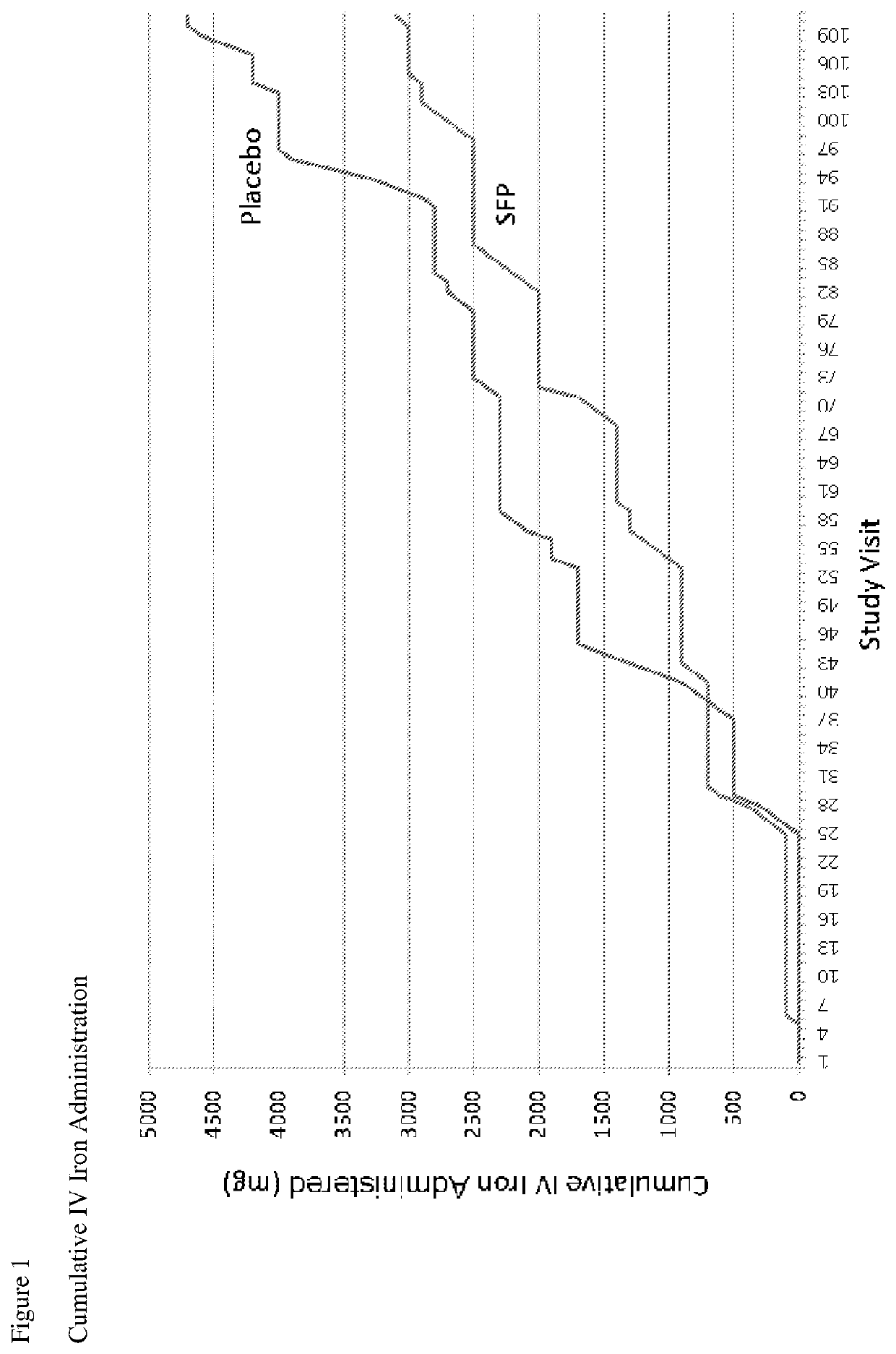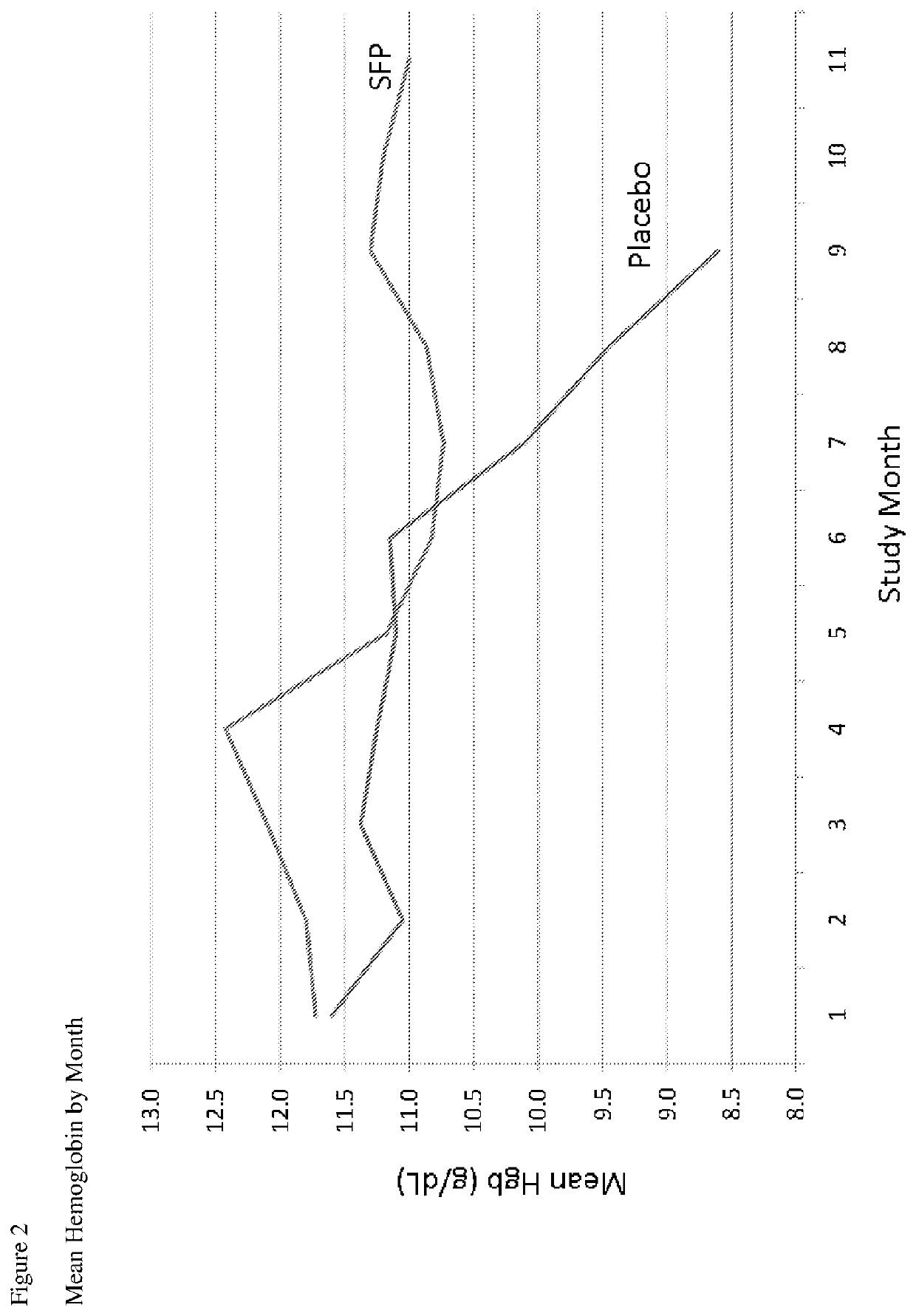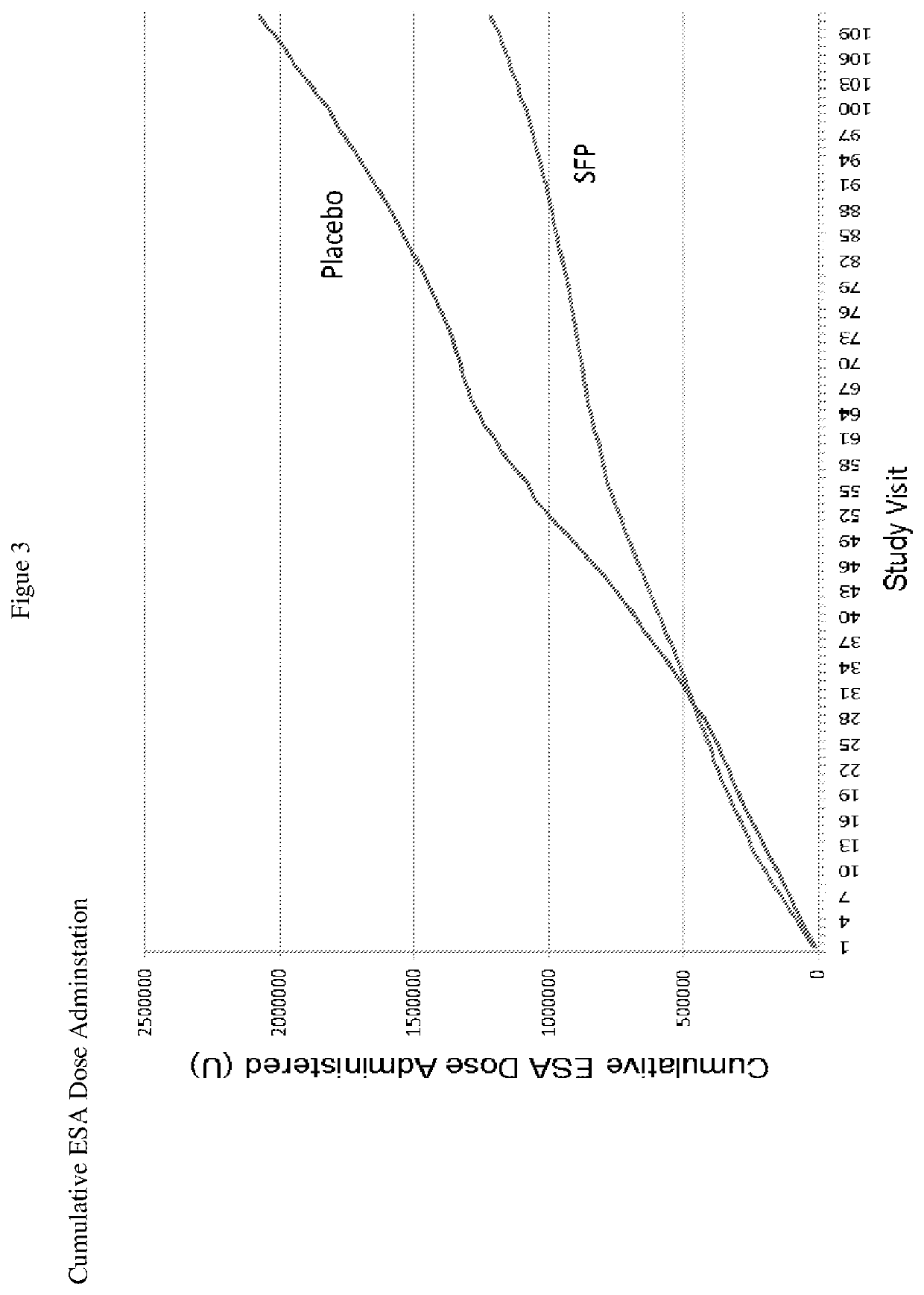Methods of treating iron deficiency
a technology of iron deficiency and iron deficiency, applied in the field of methods of treating iron deficiency, can solve the problems of increased risk of death, adverse cardiovascular events and strokes, and worsening hypertension, so as to reduce the amount of esa, increase or maintain hgb levels, and reduce the dose of esa
- Summary
- Abstract
- Description
- Claims
- Application Information
AI Technical Summary
Benefits of technology
Problems solved by technology
Method used
Image
Examples
example 1
SFP Delivered Via the Hemodialysate in Hemodialysis Dependent CKD is Safe and Effective
[0084]A prospective, randomized, double-blinded, multicenter, parallel control group clinical trial to determine the safety and efficacy of physiological iron maintenance in ESRD subjects by delivery of SFP via hemodialysate was carried out. The anemia manager making decisions about ESA dose changes and IV iron administration, the sponsor and independent site monitor were blinded to treatment group assignment. The primary objective of this study was to compare the safety and efficacy in sparing the need for supplemental IV iron required to maintain Hgb >10 g / dL in patients on 110 μg SFP-iron per liter of hemodialysate vs. conventional dialysate over 36 weeks. Conventional dialysate refers to hemodialysis without the addition of SFP to the dialysate.
[0085]The primary endpoint for efficacy was the amount of therapeutic iron needed and for safety, adverse events, vital signs, and clinical laboratory ...
example 2
[0095]A 60 year old Caucasian male with hemodialysis dependent CKD and history of diabetes, hypertension, acute myocardial infarction, cerebrovascular accident and toe gangrene is receiving 400 units of recombinant erythropoietin per kilogram body weight per week to maintain Hgb in the 9-11 g / L target range. Patient has been receiving intravenous iron in a dose of 50 mg per week and is presumably iron replete as indicated by a serum ferritin level of 750 μg / L and a transferrin saturation of 25%. Intravenous iron is discontinued and the patient is started on SFP administration via the hemodialysate in a dose of 2 μmoles of SFP iron per liter of hemodialysate. There is progressive decline in ESA dose after 2 months of SFP therapy, and after 6 months patient is requiring only 100 units of recombinant erythropoietin per kilogram body weight per week to maintain Hgb in the 9-11 g / L target range. The serum ferritin at 6 months is 700 μg / L and transferrin saturation is 22%.
example 3
[0096]A 30 year old Hispanic male with hemodialysis dependent CKD secondary to glomerulonephritis is receiving 100 units of recombinant erythropoietin per kilogram body weight per week to maintain Hgb in the 9-11 g / L target range. Patient has been receiving intravenous iron in a dose of 100 mg every 2 weeks and is presumably iron replete as indicated by a serum ferritin level of 600 μg / L and a transferrin saturation of 27%. Intravenous iron is discontinued and the patient is started on SFP administration via the hemodialysate in a dose of 2 μmoles of SFP iron per liter of hemodialysate. There is progressive decline in ESA dose after 2 months of SFP therapy such that at 4 months recombinant erythropoietin is discontinued. At 12 months patient continues to maintain Hgb without ESA therapy while the serum ferritin is 650 μg / L and transferrin saturation of 33%.
PUM
 Login to View More
Login to View More Abstract
Description
Claims
Application Information
 Login to View More
Login to View More - R&D
- Intellectual Property
- Life Sciences
- Materials
- Tech Scout
- Unparalleled Data Quality
- Higher Quality Content
- 60% Fewer Hallucinations
Browse by: Latest US Patents, China's latest patents, Technical Efficacy Thesaurus, Application Domain, Technology Topic, Popular Technical Reports.
© 2025 PatSnap. All rights reserved.Legal|Privacy policy|Modern Slavery Act Transparency Statement|Sitemap|About US| Contact US: help@patsnap.com



